Perfecting the Round Table is a series where our contributors discuss various topics back and forth. We encourage you to participate in the comments below.
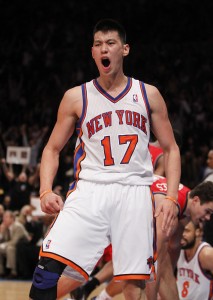 Rahat Ahmed (
Rahat Ahmed (![]() ): How important is it that Jeremy Lin is an Asian-American? Would we care less if he was black or white? Is Lin’s rise to sudden stardom more important for basketball, New York or Asian-Americans?
): How important is it that Jeremy Lin is an Asian-American? Would we care less if he was black or white? Is Lin’s rise to sudden stardom more important for basketball, New York or Asian-Americans?
Douglas Chau (![]() ): Asian American identity, by far. It doesn’t hurt that he plays in NY, where he’ll get huge media exposure, but it’s more the curiosity that comes with being unfamiliar. If this was a black player, we wouldn’t give it a second thought. That black player would be thought of as keeping the seat warm until STAT and Melo get back. Instead, the media is making this a team of Lin, Stat and Melo. While I don’t think he’ll keep this up, I’d be more than happy with a 15 and 8 line at the end of the season. The scouting report still holds true on him: He can’t go left very well, he certainly can’t finish left and his jumper is shaky, at best. Plus, he is Turnover City. Besides, his first games have come a third of the way into a season where the schedule is compressed, and everyone he’s playing against is tired of the back-to-backs.
): Asian American identity, by far. It doesn’t hurt that he plays in NY, where he’ll get huge media exposure, but it’s more the curiosity that comes with being unfamiliar. If this was a black player, we wouldn’t give it a second thought. That black player would be thought of as keeping the seat warm until STAT and Melo get back. Instead, the media is making this a team of Lin, Stat and Melo. While I don’t think he’ll keep this up, I’d be more than happy with a 15 and 8 line at the end of the season. The scouting report still holds true on him: He can’t go left very well, he certainly can’t finish left and his jumper is shaky, at best. Plus, he is Turnover City. Besides, his first games have come a third of the way into a season where the schedule is compressed, and everyone he’s playing against is tired of the back-to-backs.
In essence, J-Lin plays like every Asian guard you’ve ever played pickup ball with: He has a quick first step, gets into the lane and keeps coming. You probably won’t see him mentally check out at the end of a game. That’s what I like best about his game, but let’s leave all that “on pace for hall of fame numbers” hogwash to Skip Bayless and the “tiny pecker” jokes to Jason Whitlock.
Marcus Bui (![]() ): Everybody loves the underdog story: David “pwnz” Goliath in a 1-on-1 duel, ’84 Americans beat the Russians, Eli does it again against the patriots.
): Everybody loves the underdog story: David “pwnz” Goliath in a 1-on-1 duel, ’84 Americans beat the Russians, Eli does it again against the patriots.
I’m personally happy for the guy because as much as I’d love to be an NBA Basketball player, there’s simply no hope for me: I’m just lacking way too much. Size, strength, skill, a last name that is catchy, etc. Jeremy Lin represents the average American—not just Asians—that similarly lacks elite athleticism but has a high basketball IQ. In a league where players are drafted and given millions of dollars based on just potential and physical size/strength (e.g. Kwame Brown, Hasheem Thabeet, Bismarck Biyombo), these types of players are deemed much more valuable than the plethora of players who are 6’10 or shorter and are much more skilled (i.e. hit at least 3 consecutive free throws) because, in the end, “you just can’t teach size.”
However, I’m annoyed at certain publicity that Jeremy Lin is getting. Because Lin is in a Knicks uniform and is on the “Big Stage,” there’s just simply way too much knee-jerking about how great this guy really is. MVP chants? Come on MSG, you’re better than that. The thing that irritates me to no end is that the Rockets and Warriors forums are filled with hundreds of posts regarding the “Lin-sanity” DNPs and how they lost out… These types of reactions are big slaps in the face to Kyle Lowry, Stephen Curry and Monta Ellis who are truly elite PGs in the NBA. Don’t get me wrong, what Lin has achieved in his starting position for the Knicks is great, but there are many factors playing into how “great” he really is.
1) The level of competition/matchups have been really generous to Lin. The one team that should have posed a threat to the Knicks, the Lakers, have their biggest weakness at point guard. When you’re seriously considering a 36-year-old Allen Iverson as an upgrade offensively and defensively, you’ve got some serious issues.
2) The Knicks offense stuffs PG stats. Look at Raymond Felton and Chris Duhon as examples. Their statistics as a Knick are much higher than their career averages.
3) Any wins right now for the Knicks are much better than the amount of losing they were enduring—especially with two all-star players at the helm. It’s extremely irritable to see knee-jerk reactions like “What are we going to do with Melo and STAT now? Trade?” You just gave up 6 players for Melo!
In the end, Jeremy Lin is displaying some enjoyable entertainment—it’s not everyday my wife (who has a minimal desire to watch sports) will sit glued to a Knicks-Timberwolves game and complain about me switching channels during commercials for fear of missing a Lin highlight.
Nick Britton (![]() ): I’m not Asian-American so his being Asian doesn’t really have the impact on me that it would if I were. I was a little amazed at all of the comments along the lines of “this is the biggest story in Asian-American sports history!” but after a little discussion, it dawned on me that in the big four, there really hasn’t been that much in the way of Asian American athletes. Or, perhaps more telling, the Asian athletes, your Ichiros and Nomos and Yaos, have dominated the discussion of Asian, American or not, influence on sports. When I made a mental list of Asian-Americans in the big four, I got Dat Nguyen and Kurt Suzuki. That’s it.
): I’m not Asian-American so his being Asian doesn’t really have the impact on me that it would if I were. I was a little amazed at all of the comments along the lines of “this is the biggest story in Asian-American sports history!” but after a little discussion, it dawned on me that in the big four, there really hasn’t been that much in the way of Asian American athletes. Or, perhaps more telling, the Asian athletes, your Ichiros and Nomos and Yaos, have dominated the discussion of Asian, American or not, influence on sports. When I made a mental list of Asian-Americans in the big four, I got Dat Nguyen and Kurt Suzuki. That’s it.
Jeremy Lin is a good story for the traditional underdog reasons: He was all-everything in California, but no one recruited him. He went to an Ivy League school without a scholarship, led Harvard to their best season and got very little love from the pros. But he’s interesting because underdogs in the NBA are just more interesting: The elite college kids get the hype, all of the love, the focus from ESPN and all of that. And it’s non-stop. So when a smaller kid from an Ivy League school who played four years in college comes and shows up Deron Williams, John Wall and Kobe Bryant, I’m interested. Especially Kobe Bryant.
Douglas Chau (![]() ): Being Asian-American is a big part of that underdog story that people are talking about, whether they admit it or not. If he was a black kid (using black because they’re the majority of basketball players, not because I hate white people) and he was Mr. Basketball in California, he wouldn’t have gone unrecruited. He wouldn’t have gotten zero Division I scholarships. Whether people care or relate to him because he’s Asian-American is one thing, but it’s a big part of why he’s the underdog that those people identify with.
): Being Asian-American is a big part of that underdog story that people are talking about, whether they admit it or not. If he was a black kid (using black because they’re the majority of basketball players, not because I hate white people) and he was Mr. Basketball in California, he wouldn’t have gone unrecruited. He wouldn’t have gotten zero Division I scholarships. Whether people care or relate to him because he’s Asian-American is one thing, but it’s a big part of why he’s the underdog that those people identify with.
To a certain extent, he’s easy to identify with for some of the same reasons that Iverson was. He’s relatively small, and he’s going at bigger foes (how I’d imagine most people view their challenges in life).
Rob Boylan: I’m pretty sure Richard Park and Devon Setoguchi (and Nazem Kadri is from Lebanon, to be fair) are the only Asians in the NHL. Park is a good fourth line grinders/penalty kill guy, the kind of guy who gets under your skin with hard work (I remember him scoring a 5-on-3 short handed goal against the Rangers a few years ago), while Setoguchi is probably an AHL player who got a huge bump in his rookie year by playing with Joe Thornton. If any of us played on a line with Joe Thornton we’d score 30 goals too.
Not being Asian or a basketball fan though, I have a limited interest in the story, but I do admit to finding it interesting as long as he doesn’t start writing bible passages on himself like Tebow.
Andrew Feingold (![]() ): Bottom line is if he didn’t play in New York, his jersey would not be the top seller. The media loves this, and it’s saved D’Antoni’s job for now.
): Bottom line is if he didn’t play in New York, his jersey would not be the top seller. The media loves this, and it’s saved D’Antoni’s job for now.
Rahat Ahmed (![]() ): We’ve read that Lin was Mr. Basketball in California, but that is incorrect. Chase Budinger, incidentally, won it before going onto Arizona and then getting drafted by the Houston Rockets—the same team that cut Lin earlier this year. He was, however, Northern California Division II Player of the Year and first-team All-State. So, while it wasn’t Mr. Basketball, that’s still a resume that should have gotten some attention for a Division I basketball university. Alas, such was not the case, and I cannot help but agree with Doug that it was because he was Asian. Other than that factor, what other reason could there be? Because even if you’re not a prototypical size, the kind of production he had in high school still demanded attention from some podunk college of mediocrity. And even that he apparently did not receive.
): We’ve read that Lin was Mr. Basketball in California, but that is incorrect. Chase Budinger, incidentally, won it before going onto Arizona and then getting drafted by the Houston Rockets—the same team that cut Lin earlier this year. He was, however, Northern California Division II Player of the Year and first-team All-State. So, while it wasn’t Mr. Basketball, that’s still a resume that should have gotten some attention for a Division I basketball university. Alas, such was not the case, and I cannot help but agree with Doug that it was because he was Asian. Other than that factor, what other reason could there be? Because even if you’re not a prototypical size, the kind of production he had in high school still demanded attention from some podunk college of mediocrity. And even that he apparently did not receive.
Andrew Feingold (![]() ): Fun listening to New York sports radio and a caller already comparing him to Steve Nash…
): Fun listening to New York sports radio and a caller already comparing him to Steve Nash…
Rahat Ahmed (![]() ): It’s true that he’s got the basketball IQ to possibly manage D’Antoni’s court game, but we’ve seen that in the absence of the $180 million men, he doesn’t mind getting his hands dirty. His fearlessness reminds me considerably more of Russell Westbrook than Nash, though I worry if he’ll continue forcing it as he did against Minnesota when Melo and Amare come back. What I can’t tell, though, is if him taking 20+ shots a game is a bad thing or a good thing. If he ends up disorienting defenses, creating space (especially on the perimeter for a sharpshooter such as Steve Novak) or simply being more efficient than Melo, maybe he should shoot 25 a game!
): It’s true that he’s got the basketball IQ to possibly manage D’Antoni’s court game, but we’ve seen that in the absence of the $180 million men, he doesn’t mind getting his hands dirty. His fearlessness reminds me considerably more of Russell Westbrook than Nash, though I worry if he’ll continue forcing it as he did against Minnesota when Melo and Amare come back. What I can’t tell, though, is if him taking 20+ shots a game is a bad thing or a good thing. If he ends up disorienting defenses, creating space (especially on the perimeter for a sharpshooter such as Steve Novak) or simply being more efficient than Melo, maybe he should shoot 25 a game!
Marcus Bui (![]() ): ESPN SportsNation asked, “Who is the NBA’s best point guard?” Clearly 14% of the country has gone full retard. It was 20%+ earlier…
): ESPN SportsNation asked, “Who is the NBA’s best point guard?” Clearly 14% of the country has gone full retard. It was 20%+ earlier…
Rahat Ahmed (![]() ): It’s Paul, Williams or Rose. Anyone who answers Lin is clearly not a real basketball fan. And non-basketball fans do read ESPN.
): It’s Paul, Williams or Rose. Anyone who answers Lin is clearly not a real basketball fan. And non-basketball fans do read ESPN.
Douglas Chau (![]() ): It’s CP3 in my book. But seriously, I hate the Internet generation because of things like this. Jeremy Lin hasn’t played nearly enough for him to even be allowed to be in this conversation, yet somehow Facebook and Twitter allowed him to be mentioned. Did anyone realize that Rondo threw up a 32-10-15 trip dub last night?! And we’re still talking about a dude that struggled to finish against a long armed Spanish rookie?
): It’s CP3 in my book. But seriously, I hate the Internet generation because of things like this. Jeremy Lin hasn’t played nearly enough for him to even be allowed to be in this conversation, yet somehow Facebook and Twitter allowed him to be mentioned. Did anyone realize that Rondo threw up a 32-10-15 trip dub last night?! And we’re still talking about a dude that struggled to finish against a long armed Spanish rookie?
Andrew Feingold (![]() ): Skills-wise, Kyrie Irving is better than Lin, just on a worse team and now hurt. Again, look at the numbers Felton was putting up with the Knicks…
): Skills-wise, Kyrie Irving is better than Lin, just on a worse team and now hurt. Again, look at the numbers Felton was putting up with the Knicks…
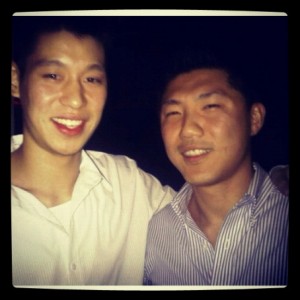 Ethan Kim (
Ethan Kim (![]() ): I’m Asian-American. I am a die-hard hoops fan. Lifelong Knicks fan. This approach is not about his skills on the court, something I can address later as I’ve tracked his career since Harvard and have been to every Knicks home game since his breakout Nets game.
): I’m Asian-American. I am a die-hard hoops fan. Lifelong Knicks fan. This approach is not about his skills on the court, something I can address later as I’ve tracked his career since Harvard and have been to every Knicks home game since his breakout Nets game.
This time of year, like all other years, there are no pro sports of significance (sorry hockey fans). The New York media was busy focusing on the Giants’ incredible run but once that was over, all eyes were going to be on the Knicks anyway. This Jeremy Lin thing just gives them much more ammunition.
Identity: I really really want to say, “I don’t care that he’s Asian-American, as long as he can put the ball in the hoop, make the right pass and win games for my beloved Knicks.” If I said that, I know I’d be lying, and nobody likes a liar. As a die-hard hoops enthusiast who plays in multiple basketball leagues, all that matters to me is how you perform on the court. That’s the bottom line. But in this case, it’s different. I was, and still am not (although I may sound like one after reading this), one of those overly “Asian Pride” type of guys. Growing up on Long Island, I guess you can call me the cookie-cutter Asian-American embracing both cultures due to my parents’ influence, but identifying myself to the American culture more. What I’m trying to say is, I identify with this guy Jeremy Lin so much and I’ve never had someone like that in the sports/entertainment industry before. Jackie Chan? Jet Li? Yao? Yi? Nope. The closest I have is Anthony Kim but golf just doesn’t do it for me. Jeremy grew up as an Asian-American and had to deal with the same issues that come with that territory. He’s not a Yao nor a Yi who I have nothing in common with except the way we look. I grew up watching Saved by the Bell, Fresh Prince, etc. I’m sure Yao nor Yi have watched Saved by the Bell, but I’m pretty sure Jeremy has. Yao and Yi are products of the Chinese Government athletic programs whereas I just tried to make the varsity basketball team in high school. To put it simply, that’s the difference in why I never found myself rooting for or even being a fan of Yao/Yi. I can see myself in Jeremy, and if I were younger, he’d be my role model and inspiration that if I work hard, I can make it to the NBA and not have to be 7 feet tall.
Pressures: Being the starting PG for the Knicks is pressure enough for any basketball player with the New York media and fans watching and judging every move. Throw in the fact that we were supposed to contend for a title this season. We’ve also been on a ridiculously horrible losing streak that was temporarily masked by the Giants’ success. Factor in the insane media hype of “Linsanity” that is now reaching Tebow’ish proportions. Don’t forget the millions of fans in Asia (China, Taiwan, Korea, Japan, Philipines, Thailand, etc.) who are also getting enamored with this guy. Then there are guys like me all over the country: The Asian-American kid who instantly identifies with hm. And then to a smaller degree, there are religious people who see him as an ambassador for Christianity in sports. That’s a lot of pressure for a kid to deal with. He’s dealt with it humbly with a certain maturity beyond his years while putting up numbers and winning games.
So while the Knicks finally found the PG that can run the offense, Jeremy Lin’s impact transcends just the basketball court into a whole new arena of cultural and social importance. It gives hope to the Asian American male that it is indeed possible, and shows mainstream America that hey, an Asian-American guy can also be a sports “star.” What made me the most happy at the Lakers game this past Friday were the 6 Caucasian kids (ages 6-12 roughly) begging their dads to get them a Lin jersey. Every time Lin made a play, these kids were cheering hard because Jeremy was a good basketball player.
Personal Note: I’ve actually met him twice through a friend and got to hang out with him. I’ve seen him play in person in college many times as I tracked his career since his junior year at Harvard. What you see in the interviews is the real deal, this kid isn’t letting this get to his head. That’s refreshing especially in the NBA.
With that said, Kobe is still my favorite player.
Douglas Chau (![]() ): The interesting question from a basketball perspective is whether the Knicks will have this type of stifling defense when the stars come back.
): The interesting question from a basketball perspective is whether the Knicks will have this type of stifling defense when the stars come back.
And very well thought out, Ethan.
Marcus Bui (![]() ): That was a refreshing read Ethan, I thoroughly enjoyed your response.
): That was a refreshing read Ethan, I thoroughly enjoyed your response.
I play a lot of basketball—both leagues and for fun at the gym. I’m taller than the typical asian guy, just a tad over 5’11. The thing is, Jeremy Lin is 6’3, and they were surprised that he could dunk. He has a standing reach of 8’2—that means he has to jump approximately 26+ inches to dunk a basketball, which is pretty low standard for a professional athlete. I know plenty of Asians that can dunk that are much shorter than him or me.
This is the Asian bias that we have come to tolerate. At the gym, there are plenty of times when people are selecting teams and the black guy gets picked over an Asian guy with superior athleticism, skills and basketball IQ. You choose an Asian guy to do your math homework, not score you buckets.
I have been following him for a while too as I also have a sense of AzN PrYdE (you have to write it that way… you just have to), and I do consciously/self-consciously look for that similar identification. Herein lies the issue that I have with Lin right now: It’s not that I hate Lin, I want him to succeed. It’s the awareness of what you’re capable of. As you stated before, Lin has been really humble about his play, I believe he knows that the stars just lined up for him perfectly, and it won’t last long. It’s the “fans” that make this hype truly unbearable for me.
It’s my opinion that it’s CP3 > D-Rose > D-Will > everyone else. It’s still amazing how many people who you imagine would know better are proclaiming Lin to be in the same ranks. When it comes to point guards, my arguments are along the lines of “Nash vs. Kidd” (aka pure offense vs. everything but a shot pre-2008).
However, this Lin hype is ridiculous. If you watched the Knicks-Wizards game, you would know that Wall outplayed Lin on almost ever single facet. That dunk wasn’t even the product of Wall’s bad defense but Trevor Booker’s failure to pick up the help defense.
Again, I reiterate that I am not hating on Lin but I’m definitely more “grounded” on what it seems he is truly capable of. As I’ve pointed out to people before, Nikola Pekovic is averaging 17 points and 10 rebounds in 7 games as a Wolves starter—should I start thinking that he’s better or on the same level as Al Jefferson, Marc Gasol, Al Horford and LaMarcus Aldridge?
Ethan Kim (![]() ): John Wall played great but a point guard’s job is to run the offense. John Wall didn’t do that. He looked to score more than run the offense. John Wall is a better basketball player than Lin, no doubt. Also agree with you on the dunk thing. Wall was expecting Booker to hedge early and high on the screen.
): John Wall played great but a point guard’s job is to run the offense. John Wall didn’t do that. He looked to score more than run the offense. John Wall is a better basketball player than Lin, no doubt. Also agree with you on the dunk thing. Wall was expecting Booker to hedge early and high on the screen.
You can’t discount how Lin took over the game in key moments and ended with a dub-dub playing with the likes of Jeffries and Walker.
CP3 is the best point guard in the nba. Then Rose. Those two are by far the top two in the league.
Marcus Bui (![]() ): I agree to a point about your point guard comment. I believe the better statement is “your most skilled player” should be directing the offense, and generally, the shorter you are, the more skilled you have to be to be in the NBA. You have to be insanely skilled at the height of Muggsy Bogues or Earl Boykins to make it in this league, but you have your LeBrons and T-Macs that kind of go against the grain.
): I agree to a point about your point guard comment. I believe the better statement is “your most skilled player” should be directing the offense, and generally, the shorter you are, the more skilled you have to be to be in the NBA. You have to be insanely skilled at the height of Muggsy Bogues or Earl Boykins to make it in this league, but you have your LeBrons and T-Macs that kind of go against the grain.
John Wall is a pass first PG. He’s just asked to score on a very crappy Wizards team. I don’t want to compare Lin to Wall. To me, there isn’t a comparison. It’s just that the public makes these comparisons that drive me up the wall. Right now, I can guarantee that the Knicks would rather have (pick one): Teague, Rondo, Augustin, Rose, Irving, Knight, Monta, Curry, Lowry, Collison, CP3, Conley, Jennings, Rubio, D-will, J-Jack, Westbrook, Holiday, Lou Williams, Nash, Tyreke, Parker or Wall. That’s just the PGs that I know for sure that the Knicks would rather have and not the debateable ones like Jameer Nelson, Felton, etc.
Rob Boylan: Excuse me everyone, but it’s now Eastern Conference Player of the Week Jeremy Lin, not just Jeremy Lin.
Douglas Chau (![]() ): Thoughts on Mayweather’s comments? I think he’s right. Lin is getting tons of press because he’s a novelty who happens to be playing in the major media market. If it was a black dude in Milwaukee putting up the same numbers, I highly doubt he’d be generating this much interest.
): Thoughts on Mayweather’s comments? I think he’s right. Lin is getting tons of press because he’s a novelty who happens to be playing in the major media market. If it was a black dude in Milwaukee putting up the same numbers, I highly doubt he’d be generating this much interest.
Also, I had someone argue with me that Lin’s appeal is that he’s an underdog (cut from two teams, D-league, etc), not that he’s Asian. Opinions on that?
Nick Britton (![]() ): His appeal is that he’s an underdog. It’s a feel good story about a guy making the best of his opportunity despite being cut twice and being a D-Leaguer in a league that offers very little in the way of opportunities for guys like him, of his size, etc. Him being from Harvard and not being recruited is way, way, way more interesting to me. His being Asian is part of that, sure, but I really don’t find his being Asian on its own that huge of a thing. I’ve seen Asians in the NBA before. His being Asian-American doesn’t really mean all that much to me personally.
): His appeal is that he’s an underdog. It’s a feel good story about a guy making the best of his opportunity despite being cut twice and being a D-Leaguer in a league that offers very little in the way of opportunities for guys like him, of his size, etc. Him being from Harvard and not being recruited is way, way, way more interesting to me. His being Asian is part of that, sure, but I really don’t find his being Asian on its own that huge of a thing. I’ve seen Asians in the NBA before. His being Asian-American doesn’t really mean all that much to me personally.
But, to address your first point, he very much is a novelty to many—possibly most—people and him being in New York absolutely helps that. And, to be honest and probably a little crass, black dudes putting up the same numbers in Milwaukee… as long as we have the Bucks and Marquette, we’re always going to see that.
Isn’t this similar to Jason Williams of the Kings back in the late 90s? A white guy from West Virginia playing street ball at the pro level? Perhaps it’s not as novel, but it’s just the perceived fish-out-of-water thing.
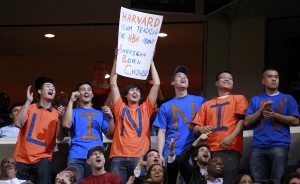 Douglas Chau (
Douglas Chau (![]() ): Granted, it’s all a package with this guy, but I don’t know if many people are relating to him because he’s an Ivy League grad. He’s also not undersized at 6’3, 200. There have certainly been guys smaller than him that were better (Iverson for one). Isn’t part of the reason he wasn’t recruited in the first place because he is Asian? The PC thing to say is that judgment was based on ability, but those judgments were made by humans.
): Granted, it’s all a package with this guy, but I don’t know if many people are relating to him because he’s an Ivy League grad. He’s also not undersized at 6’3, 200. There have certainly been guys smaller than him that were better (Iverson for one). Isn’t part of the reason he wasn’t recruited in the first place because he is Asian? The PC thing to say is that judgment was based on ability, but those judgments were made by humans.
I understand the underdog aspect of the story, but even in terms of that, his story doesn’t really stack up with other recent stories. Kurt Warner being exhibit A and Tom Brady being exhibit B. Those guys went from out of the league/end of the roster to Hall of Famers. This dude has played well in a few games by jumping into the middle of a compressed schedule where everybody else was already tired. Maybe my exasperation with the Internet age is manifesting itself with hate against Jeremy Lin. To me, this is like knowing about an indie band before everyone else and then they hit it big and everybody jocks them and then everybody hates them. (Read: Black Eyed Peas) Honestly, I’m just preparing myself for the backlash.
Total side note about the fish out of water thing: Since you brought up J-Will, I want to bring up his running mate from high school. Why doesn’t Randy Moss get more love for owning a NASCAR truck team?
Rahat Ahmed (![]() ): Nobody actually cares that he went to Harvard (at least not anyone outside of Ivy institutions). It’s more about the underdog combined with the racial angle that creates the perfect storm. Of course, he’s performed on the court, and that’s the most important part. And as you say, Doug, he wasn’t recruited because he was Asian. There’s no other reason at all to think why he didn’t get a scholarship. There are too many schools who scout in California for there to be another explanation.
): Nobody actually cares that he went to Harvard (at least not anyone outside of Ivy institutions). It’s more about the underdog combined with the racial angle that creates the perfect storm. Of course, he’s performed on the court, and that’s the most important part. And as you say, Doug, he wasn’t recruited because he was Asian. There’s no other reason at all to think why he didn’t get a scholarship. There are too many schools who scout in California for there to be another explanation.
And David Stern has said he will not send a special invite to Lin for the Rising Stars game. I’m all for tradition, but they run the All-Star game on such a whim that I find this decision to be ridiculous.
•••
Lin just drained the game-winning three against the Raptors with the coldest of staredowns. Are we buying? If so, at what value?
Andrew Feingold (![]() ): What a second half comeback. Real nice game out of Calderon but the Raptors are not very good either.
): What a second half comeback. Real nice game out of Calderon but the Raptors are not very good either.
Rob Boylan: You can only beat what’s in front of you. It’s a professional league. Even the bad teams are pretty good.
Andrew Feingold (![]() ): Bobcats and Wizards would say different…
): Bobcats and Wizards would say different…
Marcus Bui (![]() ): I’m buying in that Jeremy Lin is an NBA player, though I’ve felt that way the whole time. I’m not saying that Jeremy Lin doesn’t deserve to be in the NBA, what I’m saying is that he isn’t a “superstar.” We’re being critical over 6 games, in a shortened season that Lin hasn’t been exhausted in the first 20+ games.
): I’m buying in that Jeremy Lin is an NBA player, though I’ve felt that way the whole time. I’m not saying that Jeremy Lin doesn’t deserve to be in the NBA, what I’m saying is that he isn’t a “superstar.” We’re being critical over 6 games, in a shortened season that Lin hasn’t been exhausted in the first 20+ games.
Against the Raptors, he was:
1) Getting manhandled by Jose Calderon (who isn’t by any means a top-tier PG) for the majority of the game
2) Scored alot of tough baskets, which were only tough because he can’t go left
3) Had 11 assists, many of which were really bad passes
4) Made the game tying 2 + 1 on a layup that was harder because… well, he couldn’t go left
5) Game-winning trey was good
For as much as everyone (and by “everyone” I mean everyone) talks about how meaningless the NBA regular season is, people sure are making a big deal out of Jeremy Lin. Again, there are a lot of factors into play: Nothing else for New York to talk about right now sports-wise, Asian-American succeeding, undrafted player riding an awesome roller-coaster ride, etc.
Congrats to him and his success. I personally feel that there are decisively 20+ players I’d much rather have over Lin as my starting PG and another 20 I’d most likely would rather have. If his play continues against better competition, through the end of the year, through the end of his career, then I’ll eat crow; but I’m legitimately asking: Would you want him as your starting PG for a championship contender?
Also, anyone else wonder where the defense was on that game-winning three-pointer?
Andrew Feingold (![]() ): I don’t think it wouldn’t have mattered. That shot was destined to go in?
): I don’t think it wouldn’t have mattered. That shot was destined to go in?
Douglas Chau (![]() ): I don’t think anything is destined at the end of a game when your moron coach is playing you 43 minutes.
): I don’t think anything is destined at the end of a game when your moron coach is playing you 43 minutes.
Sreesha Vaman: I’ve been away so missed most of Lin-sanity. But this is much more about him being in New York than anything else and helping the Knicks make a run to the playoffs finally. He wouldn’t get nearly the attention he does if he was in Oklahoma City or New Orleans or any of the 20+ “fodder” markets in the NBA.
The racial angle is secondary to him being on the Knicks. It’s the side salad of the story but isn’t the main course. The NBA made tremendous in-roads into the Chinese-American community over the past decade through players like Yao coming over to play in the NBA, so I wouldn’t say that Lin has galvanized a new fan base for the league.
Plus, like Marcus, I’m reserving judgement on his game until the end of the season. He’s on a great 6-game run, but let’s see what happens when teams get enough film on him to be able to figure him out. And. he started getting big-time minutes because the Knicks took a lot of injuries; what happens when those guys come back and his playing time is reduced?
I’m glad that David Stern didn’t send him to the Rising Stars event at the All-Star Game. Six games do not make a season. Saying that, if there is a last-minute injury, gotta think Lin is the first name to go as a replacement.
Rahat Ahmed (![]() ): The most important thing at this moment is perspective: We’ve got to let his game speak for himself, not the media hype. That being said, I’m going to bite the bullet and agree with Momofuku’s David Chang that Lin’s emergence is “the most important event for Asian-Americans in sports history.” As much as we want to praise Michelle Kwan, figuring skating is simply not a mainstream, national sport. In effect, there are three: Football, basketball and then baseball. The latter has had its share of successful Asians, but no Asian-Americans that I can recall. Football has had players, but none that have stood out. Dat Nguyen was a beast, but he was generally under the radar and made his biggest impact in college. Yao Ming, may I add, is not “Asian-American,” and his success can be attributed heavily to his size. But Lin, at a “normal” height and body, is doing wonders through six games. He’s made a dent into the mindset of vast areas of America (and the world) that lack a masculine, athletic Asian presence. Lin has also, in a span of a week, given hope to all the Asian-American kids who play basketball but never follow through past high school because it isn’t considered something “Asians” can do. Going pro is now suddenly a reality.
): The most important thing at this moment is perspective: We’ve got to let his game speak for himself, not the media hype. That being said, I’m going to bite the bullet and agree with Momofuku’s David Chang that Lin’s emergence is “the most important event for Asian-Americans in sports history.” As much as we want to praise Michelle Kwan, figuring skating is simply not a mainstream, national sport. In effect, there are three: Football, basketball and then baseball. The latter has had its share of successful Asians, but no Asian-Americans that I can recall. Football has had players, but none that have stood out. Dat Nguyen was a beast, but he was generally under the radar and made his biggest impact in college. Yao Ming, may I add, is not “Asian-American,” and his success can be attributed heavily to his size. But Lin, at a “normal” height and body, is doing wonders through six games. He’s made a dent into the mindset of vast areas of America (and the world) that lack a masculine, athletic Asian presence. Lin has also, in a span of a week, given hope to all the Asian-American kids who play basketball but never follow through past high school because it isn’t considered something “Asians” can do. Going pro is now suddenly a reality.
Got something to add? Join in the conversation below or become a contributor by sending us an email.

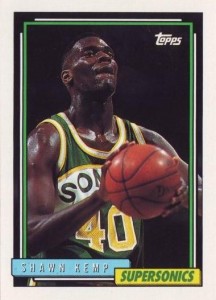
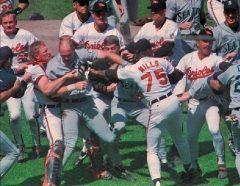
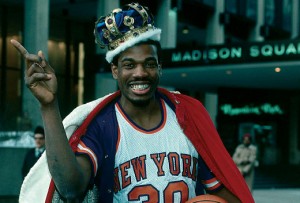
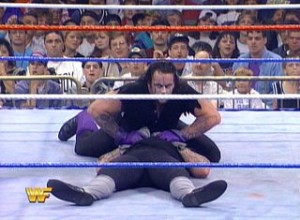
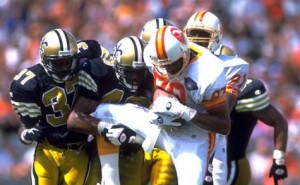
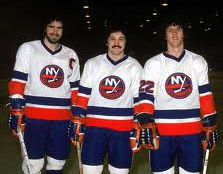
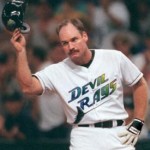 10. Wade Boggs, Tampa Bay Devil Rays
10. Wade Boggs, Tampa Bay Devil Rays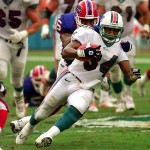 9. Thurman Thomas, Miami Dolphins
9. Thurman Thomas, Miami Dolphins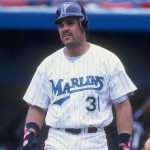 8. Mike Piazza, Florida Marlins
8. Mike Piazza, Florida Marlins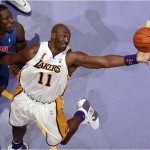 7. Karl Malone, Los Angeles Lakers
7. Karl Malone, Los Angeles Lakers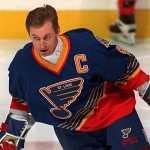 6. Wayne Gretzky, St. Louis Blues
6. Wayne Gretzky, St. Louis Blues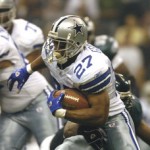 5. Eddie George, Dallas Cowboys
5. Eddie George, Dallas Cowboys 4. Hakeem Olajuwon, Toronto Raptors
4. Hakeem Olajuwon, Toronto Raptors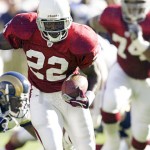 3. Emmitt Smith, Arizona Cardinals
3. Emmitt Smith, Arizona Cardinals 2. Joe Montana, Kansas City Chiefs
2. Joe Montana, Kansas City Chiefs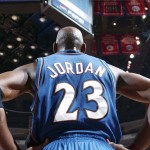 1. Michael Jordan, Washington Wizards
1. Michael Jordan, Washington Wizards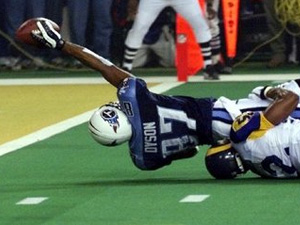
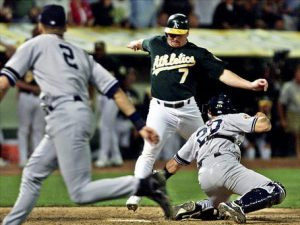
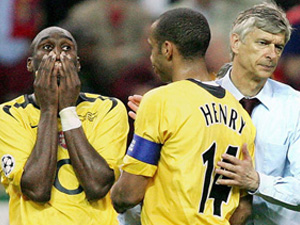
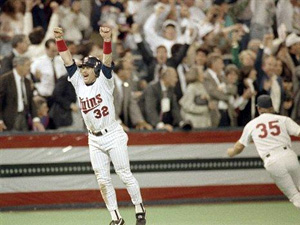
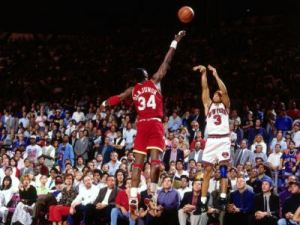 Andrew Feingold
Andrew Feingold
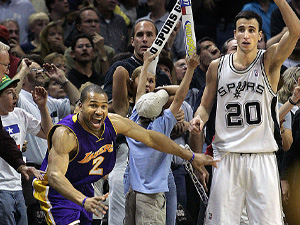
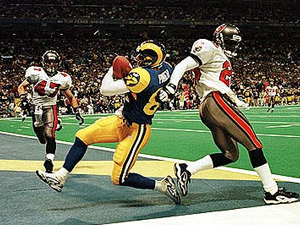

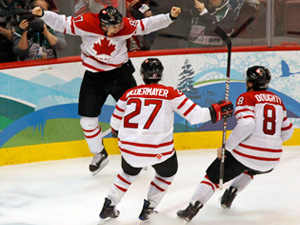
 10. Ray Lewis, LB, Baltimore Ravens: Yeah, Ray has lost a step. In fact, he’s probably only the third or fourth best player on his own defense at this point. That said, if it goes down, give me someone such as Ray-Ray, a wily vet with a noted mean streak, a ripped physique, unmatched intensity and an innate leadership quality. Plus, tell me
10. Ray Lewis, LB, Baltimore Ravens: Yeah, Ray has lost a step. In fact, he’s probably only the third or fourth best player on his own defense at this point. That said, if it goes down, give me someone such as Ray-Ray, a wily vet with a noted mean streak, a ripped physique, unmatched intensity and an innate leadership quality. Plus, tell me 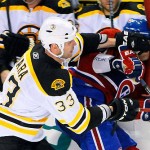 9. Zdeno Chara, Defenseman, Boston Bruins: I don’t pretend to know much about hockey, but I do know that anytime a guy
9. Zdeno Chara, Defenseman, Boston Bruins: I don’t pretend to know much about hockey, but I do know that anytime a guy 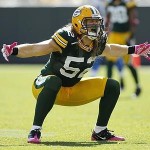 8. Clay Matthews, Linebacker, Green Bay Packers.
8. Clay Matthews, Linebacker, Green Bay Packers. 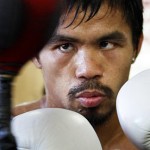 7. Manny Pacquiao, Boxer/Politician: The reasoning for this is simple … boxing is a sport in which success is measured by one’s ability to pummel his opponent into submission with his fists. No one in the world does this better than “Pac-Man.” Let’s move on.
7. Manny Pacquiao, Boxer/Politician: The reasoning for this is simple … boxing is a sport in which success is measured by one’s ability to pummel his opponent into submission with his fists. No one in the world does this better than “Pac-Man.” Let’s move on.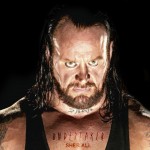 6. The Undertaker, Professional Wrestler/Dead Man: Think it’s fake, huh? Try telling that to this 7-foot, 300-plus-pound Houstonian behemoth who, by the way, also trains in mixed martial arts. Plus, his 19-0 record at WrestleMania is professional wrestling’s 56-game hitting streak.
6. The Undertaker, Professional Wrestler/Dead Man: Think it’s fake, huh? Try telling that to this 7-foot, 300-plus-pound Houstonian behemoth who, by the way, also trains in mixed martial arts. Plus, his 19-0 record at WrestleMania is professional wrestling’s 56-game hitting streak.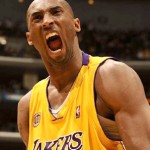 5. Kobe Bryant, Guard, Los Angeles Lakers: He’s not intimidating in terms of pure physical force, but Bryant’s intensity, work ethic and will to prevail on the court are second only to one Michael Jordan. Personally, that frightens me, if only because it indicates that Kobe is the type to sneak a shiv into a fists-only streetfight.
5. Kobe Bryant, Guard, Los Angeles Lakers: He’s not intimidating in terms of pure physical force, but Bryant’s intensity, work ethic and will to prevail on the court are second only to one Michael Jordan. Personally, that frightens me, if only because it indicates that Kobe is the type to sneak a shiv into a fists-only streetfight.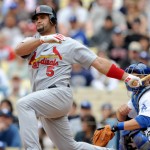 4. Albert Pujols, First Baseman, St. Louis Cardinals: By all accounts a good guy on and off the diamond, Pujols nonetheless looks like the meanest bouncer at the bar, the guy who spent all day working out in the hopes of inciting a riot later that night. His muscles have muscles. Hell,
4. Albert Pujols, First Baseman, St. Louis Cardinals: By all accounts a good guy on and off the diamond, Pujols nonetheless looks like the meanest bouncer at the bar, the guy who spent all day working out in the hopes of inciting a riot later that night. His muscles have muscles. Hell, 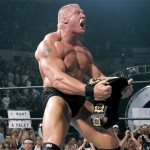 3. Brock Lesnar, UFC Heavyweight/Ill-Tempered Minnesotan: No, Brock Lesnar is not an elite UFC competitor, at least not on par with the Anderson Silvas of the cage fighting world. That said,
3. Brock Lesnar, UFC Heavyweight/Ill-Tempered Minnesotan: No, Brock Lesnar is not an elite UFC competitor, at least not on par with the Anderson Silvas of the cage fighting world. That said, 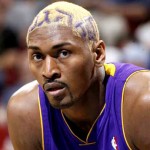 2. Ron Artest (aka Metta World Peace), Forward/Resident Lunatic, Los Angeles Lakers: The eyes don’t lie. Whether it’s that formerly-crazy girlfriend who alleges to have changed her ways, or a former
2. Ron Artest (aka Metta World Peace), Forward/Resident Lunatic, Los Angeles Lakers: The eyes don’t lie. Whether it’s that formerly-crazy girlfriend who alleges to have changed her ways, or a former 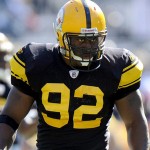 1. James Harrison, Linebacker/Gun Enthusiast/Disgruntled NFL Employee, Pittsburgh Steelers: Easy call. Harrison is a 6-foot, 250-pound, mean-spirited, hard-hitting, gun-toting madman. A former Defensive Player of the Year,
1. James Harrison, Linebacker/Gun Enthusiast/Disgruntled NFL Employee, Pittsburgh Steelers: Easy call. Harrison is a 6-foot, 250-pound, mean-spirited, hard-hitting, gun-toting madman. A former Defensive Player of the Year,  10. Tampa Bay Buccaneers 48 – Oakland Raiders 21 (Super Bowl XXXVII) » At age 37, Rich Gannon threw for 4,689 yards, won the league MVP and took the Raiders to their first Super Bowl since 1983. The oddsmakers favored their top-rated offense by 4 against Jon Gruden’s top-rated defense, but by the time the third quarter ended, it was obvious that defense did, in fact, win championships. Gruden had gotten revenge against his previous team, and the Al Davis affliction in sunny California continued to persist.
10. Tampa Bay Buccaneers 48 – Oakland Raiders 21 (Super Bowl XXXVII) » At age 37, Rich Gannon threw for 4,689 yards, won the league MVP and took the Raiders to their first Super Bowl since 1983. The oddsmakers favored their top-rated offense by 4 against Jon Gruden’s top-rated defense, but by the time the third quarter ended, it was obvious that defense did, in fact, win championships. Gruden had gotten revenge against his previous team, and the Al Davis affliction in sunny California continued to persist.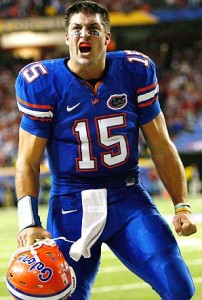 2007 BCS National Championship Game) » Troy Smith, Ted Ginn and Anthony Gonzalez made the Buckeyes look invincible throughout the season (which included a 24-7 dismantling of defending champions from the University of Texas). Aside from a late game comeback by rival Michigan, Ohio State was never in danger of losing a game. This was supposed to be one of the most lopsided deciding bowl games ever. But Chris Leak, Percy Harvin and some fellow named Tim Tebow had other ideas. After the Buckeyes returned the initial kickoff, Harvin matched—and it was a cakewalk for the remainder. It was lopsided, alright, just on the other side.
2007 BCS National Championship Game) » Troy Smith, Ted Ginn and Anthony Gonzalez made the Buckeyes look invincible throughout the season (which included a 24-7 dismantling of defending champions from the University of Texas). Aside from a late game comeback by rival Michigan, Ohio State was never in danger of losing a game. This was supposed to be one of the most lopsided deciding bowl games ever. But Chris Leak, Percy Harvin and some fellow named Tim Tebow had other ideas. After the Buckeyes returned the initial kickoff, Harvin matched—and it was a cakewalk for the remainder. It was lopsided, alright, just on the other side.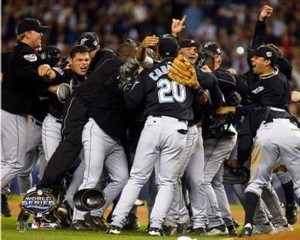 8. Florida Marlins 4 – New York Yankees 2 (2003 World Series) » Money doesn’t always make you happy, and money definitely can’t buy you championships. The Marlins shocked the Yankees (and their $110 million difference in payroll) by riding Josh Beckett to the glory land for the second time in seven years. Along the way, though, they had some extra help from a Cubs fan whose memorabilia-hogging instincts kept the grand prize away for his cursed team.
8. Florida Marlins 4 – New York Yankees 2 (2003 World Series) » Money doesn’t always make you happy, and money definitely can’t buy you championships. The Marlins shocked the Yankees (and their $110 million difference in payroll) by riding Josh Beckett to the glory land for the second time in seven years. Along the way, though, they had some extra help from a Cubs fan whose memorabilia-hogging instincts kept the grand prize away for his cursed team. 7. Greece 1 – Portugal 0 (Euro 2004) » Greece’s improbable run at Euro 2004 was capped with a second defeat of Luiz Felipe Scolari’s Portuguese squad, headlined by Luis Figo and Cristiano Ronaldo, who failed to avenge their opening day loss. Along the way, they also beat France and England. It’s possible to pad this further, but seriously, there shouldn’t be any other data necessary: Greece won Euro 2004 by defeating three powerhouses four times total. That’s the math, and that’s pretty amazing.
7. Greece 1 – Portugal 0 (Euro 2004) » Greece’s improbable run at Euro 2004 was capped with a second defeat of Luiz Felipe Scolari’s Portuguese squad, headlined by Luis Figo and Cristiano Ronaldo, who failed to avenge their opening day loss. Along the way, they also beat France and England. It’s possible to pad this further, but seriously, there shouldn’t be any other data necessary: Greece won Euro 2004 by defeating three powerhouses four times total. That’s the math, and that’s pretty amazing.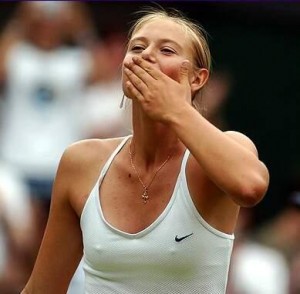 6. Maria Sharapova (6-1, 6-4) over Serena Williams (2004 Wimbledon) » Out of nowhere, 13th seeded, 17-year-old Sharapova beats two-time defending champion and #1 seed Williams in straight sets. This was a passing of the torch, of sorts, not unlike Federer beating Sampras in 2001. Of course, Serena continued her dominance for a while longer, but she’ll never forget the spark she provided to Sharapova’s career at Centre Court.
6. Maria Sharapova (6-1, 6-4) over Serena Williams (2004 Wimbledon) » Out of nowhere, 13th seeded, 17-year-old Sharapova beats two-time defending champion and #1 seed Williams in straight sets. This was a passing of the torch, of sorts, not unlike Federer beating Sampras in 2001. Of course, Serena continued her dominance for a while longer, but she’ll never forget the spark she provided to Sharapova’s career at Centre Court.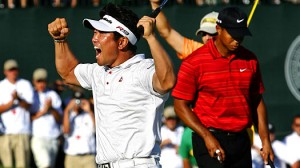 5. Y.E. Yang (-8) over Tiger Woods (-5) (2009 PGA Championship) » Golf isn’t a head-to-head sport, but when you take into effect that Yang and Woods were paired up for the final round at the Hazeltine National Golf Club, you can imagine how intense it must have been throughout the day. Tiger entered the day with a 2 shot lead before ending the day +3, in the process witnessing the first Asian-born player to win a major on the PGA tour. This was all the more impressive as Yang didn’t start playing golf until age 19. The maturing prodigy was defeated by the budding late-bloomer.
5. Y.E. Yang (-8) over Tiger Woods (-5) (2009 PGA Championship) » Golf isn’t a head-to-head sport, but when you take into effect that Yang and Woods were paired up for the final round at the Hazeltine National Golf Club, you can imagine how intense it must have been throughout the day. Tiger entered the day with a 2 shot lead before ending the day +3, in the process witnessing the first Asian-born player to win a major on the PGA tour. This was all the more impressive as Yang didn’t start playing golf until age 19. The maturing prodigy was defeated by the budding late-bloomer.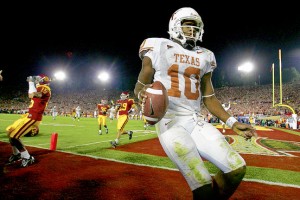 4. Texas 41 – USC 38 (2006 Rose Bowl/BCS National Championship Game) » Matt Leinart this. Reggie Bush that. For all the hype the media loves to generate, there’s probably no doubt amongst college football fanatics that this Trojans team was one of the greatest to ever play. But there was one man who, frankly, didn’t give a damn: Vince Young. He had put in the single greatest individual performance I’ve ever witnessed by the time he crossed into the endzone on 4th and 2. While the awe and magic of a game like this may never again be repeated, Young’s lesson in media-founded histrionics will always be remembered.
4. Texas 41 – USC 38 (2006 Rose Bowl/BCS National Championship Game) » Matt Leinart this. Reggie Bush that. For all the hype the media loves to generate, there’s probably no doubt amongst college football fanatics that this Trojans team was one of the greatest to ever play. But there was one man who, frankly, didn’t give a damn: Vince Young. He had put in the single greatest individual performance I’ve ever witnessed by the time he crossed into the endzone on 4th and 2. While the awe and magic of a game like this may never again be repeated, Young’s lesson in media-founded histrionics will always be remembered.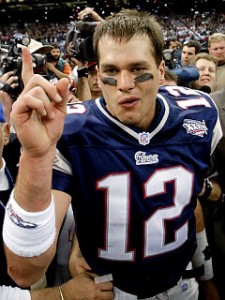 3. Patriots 20 – Rams 17 (Super Bowl XXXVI) » September 11 made New York City a solemn place to live. But for some reason, it felt as if supporting these mediocre “Patriots” would make us all happier. So, we did. Against “the Greatest Show on Turf.” Little did we know that we’d witness the genesis of one of the most hated dynasties in sports history, and that of a man who would end up marrying the world’s highest-paid supermodel and have hair softer than Justin Bieber.
3. Patriots 20 – Rams 17 (Super Bowl XXXVI) » September 11 made New York City a solemn place to live. But for some reason, it felt as if supporting these mediocre “Patriots” would make us all happier. So, we did. Against “the Greatest Show on Turf.” Little did we know that we’d witness the genesis of one of the most hated dynasties in sports history, and that of a man who would end up marrying the world’s highest-paid supermodel and have hair softer than Justin Bieber.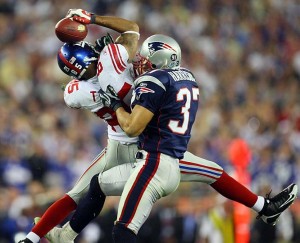 2. Giants 17 – Patriots 14 (Super Bowl XLII) » 18-1.
2. Giants 17 – Patriots 14 (Super Bowl XLII) » 18-1.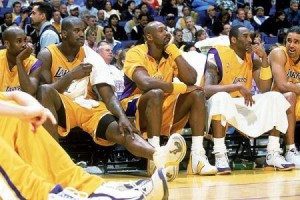
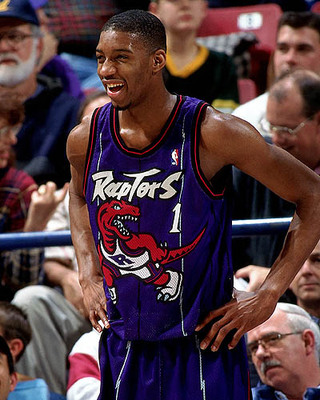 Tracy Lamar McGrady, Jr. was drafted 9th overall by the Toronto Raptors in the 1997 NBA Draft. He came straight out of high school and mainly played a reserve role in his first two seasons. A year after T-Mac’s arrival, the Raptors drafted his cousin Vince Carter with the 5th pick: The high flying duo instantly built expectations for the Canadian franchise. They finally led the Raptors to a playoff berth in 2000 only to get swept by the Knicks in the first round. Then, in order to escape the shadow of his older cousin, he forced the hand of the Raptors into a sign-and-trade that sent him to the Orlando Magic.
Tracy Lamar McGrady, Jr. was drafted 9th overall by the Toronto Raptors in the 1997 NBA Draft. He came straight out of high school and mainly played a reserve role in his first two seasons. A year after T-Mac’s arrival, the Raptors drafted his cousin Vince Carter with the 5th pick: The high flying duo instantly built expectations for the Canadian franchise. They finally led the Raptors to a playoff berth in 2000 only to get swept by the Knicks in the first round. Then, in order to escape the shadow of his older cousin, he forced the hand of the Raptors into a sign-and-trade that sent him to the Orlando Magic.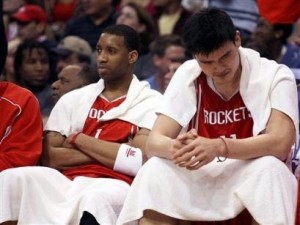 But T-Mac had Yao: That should mean something, right? But those Rockets fans who’ve obsessed over our pitfalls know better. There’s no need to discuss Yao’s fragility as that’s deserving of its own article. Yao was (and still is) the Rockets’ cash cow, whether the organization admits it or not. Retaining Yao, even into next year regardless of how much of a liability his injuries have become, is important if only because Yao is a significant financial asset. But Yao’s body and game were never meant to be paired with someone like T-Mac. In his prime, T-Mac represented an ideal NBA body: 6’9″ with a 7’3″ wingspan, 42-inch vertical jump, 235 pounds with only 8% body fat and ran the 40-yard dash in less than 4.5 seconds. He represented the perfect combination of height, weight, speed and strength to be successful in the league—a build like LeBron but with T-Mac’s quickness making up for his lack of similar upper body strength. This quickness suited him a fast-paced system, not one that has to have a half-court set with Yao. In addition, Yao’s game has always been easily neutralized: Too uncoordinated to catch quick passes, too tall to have true success with his back facing the basket, too slow and un-athletic to defend against players that would front him. The list goes on. I’m a fan of Yao only because the man always says and does the right thing and has a lot of heart. But heart only gets you so far. I’ve never met anyone who agreed that the two superstars’ games complemented each other, but everyone agreed that they were indeed “superstars” and would bring in the “kwan” and “show the Rockets the money.” (Jerry Maguire quotes seem quite fitting when discussing money and heart together.) The Rockets would’ve had more success if they had traded Yao for versatile and mobile big men, or if they had traded T-Mac for knock down shooters and defenders (something that Mark Cuban would have done without hesitation)—but the Rockets held onto their “superstars” as money in the pocket instead of building a better ball club to advance to the second round and beyond. The failures of Team USA basketball in the early 2000s have taught us that you can’t just stick a bunch of good players together and expect to win. They have to gel and complement each other. Let’s put this into a statistical perspective: Until the end of the 2007 season, the Rockets won 59% of games with Yao on the floor and 70% without.
But T-Mac had Yao: That should mean something, right? But those Rockets fans who’ve obsessed over our pitfalls know better. There’s no need to discuss Yao’s fragility as that’s deserving of its own article. Yao was (and still is) the Rockets’ cash cow, whether the organization admits it or not. Retaining Yao, even into next year regardless of how much of a liability his injuries have become, is important if only because Yao is a significant financial asset. But Yao’s body and game were never meant to be paired with someone like T-Mac. In his prime, T-Mac represented an ideal NBA body: 6’9″ with a 7’3″ wingspan, 42-inch vertical jump, 235 pounds with only 8% body fat and ran the 40-yard dash in less than 4.5 seconds. He represented the perfect combination of height, weight, speed and strength to be successful in the league—a build like LeBron but with T-Mac’s quickness making up for his lack of similar upper body strength. This quickness suited him a fast-paced system, not one that has to have a half-court set with Yao. In addition, Yao’s game has always been easily neutralized: Too uncoordinated to catch quick passes, too tall to have true success with his back facing the basket, too slow and un-athletic to defend against players that would front him. The list goes on. I’m a fan of Yao only because the man always says and does the right thing and has a lot of heart. But heart only gets you so far. I’ve never met anyone who agreed that the two superstars’ games complemented each other, but everyone agreed that they were indeed “superstars” and would bring in the “kwan” and “show the Rockets the money.” (Jerry Maguire quotes seem quite fitting when discussing money and heart together.) The Rockets would’ve had more success if they had traded Yao for versatile and mobile big men, or if they had traded T-Mac for knock down shooters and defenders (something that Mark Cuban would have done without hesitation)—but the Rockets held onto their “superstars” as money in the pocket instead of building a better ball club to advance to the second round and beyond. The failures of Team USA basketball in the early 2000s have taught us that you can’t just stick a bunch of good players together and expect to win. They have to gel and complement each other. Let’s put this into a statistical perspective: Until the end of the 2007 season, the Rockets won 59% of games with Yao on the floor and 70% without.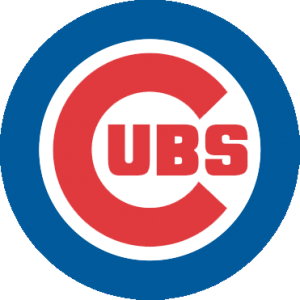
 9. Portland Trail Blazers: 1970/71 – 1989/90 (NBA)
9. Portland Trail Blazers: 1970/71 – 1989/90 (NBA)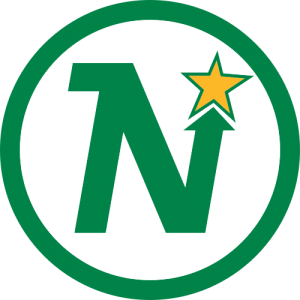 8. Minnesota North Stars: 1967/68 – 1973/74 (NHL)
8. Minnesota North Stars: 1967/68 – 1973/74 (NHL)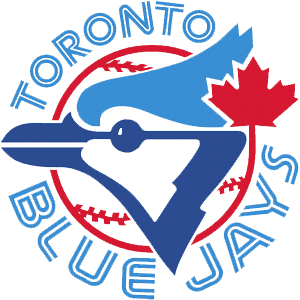 7. Toronto Blue Jays: 1977 – 1996 (MLB)
7. Toronto Blue Jays: 1977 – 1996 (MLB) 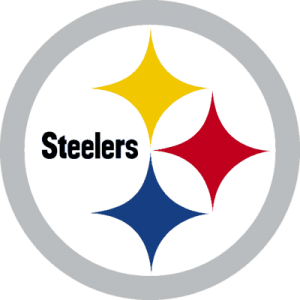 6. Pittsburgh Steelers: 1963 – present (NFL)
6. Pittsburgh Steelers: 1963 – present (NFL)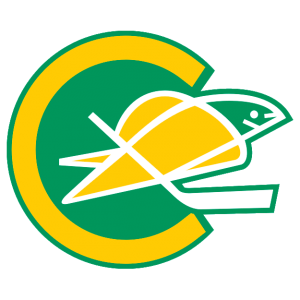 5. California Golden Seals: 1970/71 – 1973/74 (NHL)
5. California Golden Seals: 1970/71 – 1973/74 (NHL)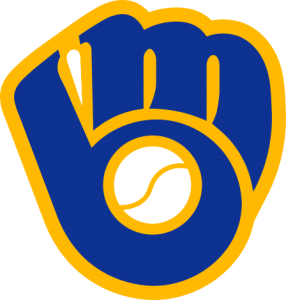 4. Milwaukee Brewers: 1978 – 1993 (MLB)
4. Milwaukee Brewers: 1978 – 1993 (MLB)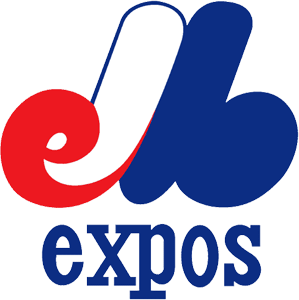 3. Montreal Expos: 1969 – 1991 (MLB)
3. Montreal Expos: 1969 – 1991 (MLB) 2. Hartford Whalers: 1979/80 – 1991/92 (NHL)
2. Hartford Whalers: 1979/80 – 1991/92 (NHL)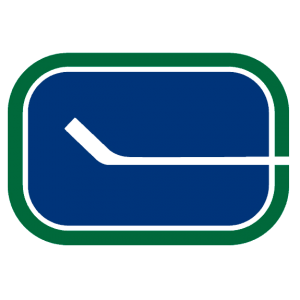 1. Vancouver Canucks: 1970/71 – 1979/1980 (NHL)
1. Vancouver Canucks: 1970/71 – 1979/1980 (NHL)
 Almost as bad (and much more idiotic) as the bandwagon hopper is the polygamist who claims to have two or more favorite teams within the same sport. The worst is when the two teams fall within the same division of the particular sport. I went to high school with a guy who claimed that his two “favorite” NBA teams were the Celtics and the Knicks. Liking these two teams equally is an impossibility, as they compete for the same division every year. The inherent flaw of this guy’s logic exposes itself when the two teams face off against each other: He then roots for the Celtics. If that’s the case, then you can’t claim for the Knicks to be your favorite, Bruno. Look up the definition of “favorite” some time. You’ll see what I mean.
Almost as bad (and much more idiotic) as the bandwagon hopper is the polygamist who claims to have two or more favorite teams within the same sport. The worst is when the two teams fall within the same division of the particular sport. I went to high school with a guy who claimed that his two “favorite” NBA teams were the Celtics and the Knicks. Liking these two teams equally is an impossibility, as they compete for the same division every year. The inherent flaw of this guy’s logic exposes itself when the two teams face off against each other: He then roots for the Celtics. If that’s the case, then you can’t claim for the Knicks to be your favorite, Bruno. Look up the definition of “favorite” some time. You’ll see what I mean.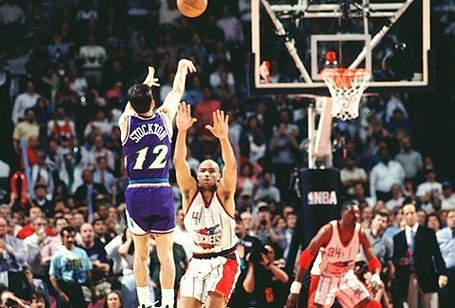 There are people in Kentucky who will threaten bloody murder upon hearing the words “Christian” and “Laettner” one after another. Because
There are people in Kentucky who will threaten bloody murder upon hearing the words “Christian” and “Laettner” one after another. Because 